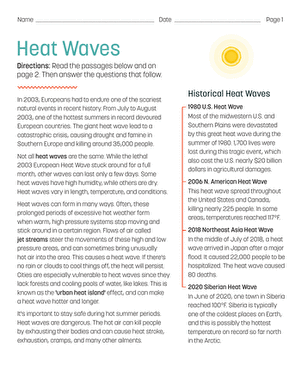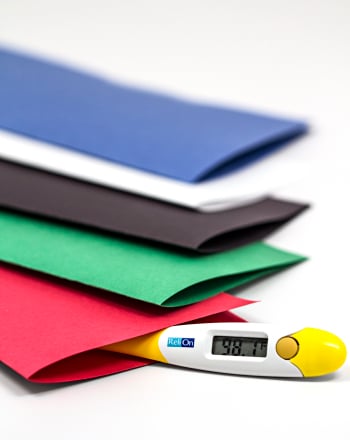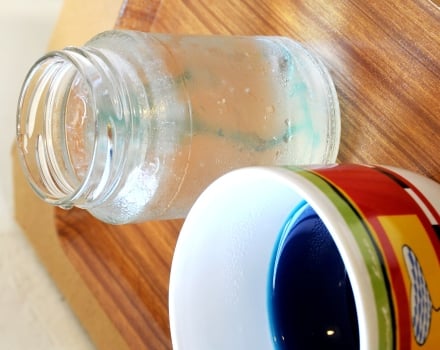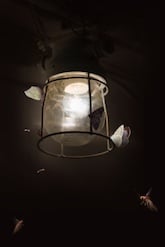Science project
Rubber Band Heat Engine
An engine is a machine used to transform one kind of energy into another to produce work. In this project, we'll learn how to make a rubber band heat engine, a type of engine that converts thermal energy, or heat, into mechanical energy, or movement.
Typically, things expand (get bigger) when heated, and contract (get smaller) when cooled. Have you ever heard creaking sounds in your room at night? These come from the floorboards contracting due to the drop in temperature that usually accompanies the sun going down.
However, this rule doesn’t apply to rubber! The molecular structure of rubber is very complex: Imagine a bunch of molecules linked together in a “chain” that resist being stretched when pulled on. This “stretchiness” enables rubber to be used in erasers, bicycle tires, and bungee cords. However, this chain-like structure also causes rubber to behave rather unusually during temperature changes.
Problem
What kind of work will a rubber band perform when its heated and cooled?
Materials
- Rubber bands of different thicknesses
- Scissors
- Heat lamp
- Ice cube
- Coin
- Hammer and nail
- Push pin
- Duct tape
- Ruler
- Plastic spool from a roll of tape (a roll with a gutter works really well; these can be acquired from certain rolls of electrical tape or PTFE tape)
Procedure
- Hammer a nail about a foot above a desk or countertop that is close to an electrical outlet (so that you’ll be able to plug in your heat lamp later). Ask an adult before making holes in the wall! Leave an inch or two of the nail sticking out of the wall.
- Take the tape roll and hang it over the center on the nail so it can rotate freely.
- Use the scissors to cut a rubber band open so you have one long strip.
- Use a thin strip of duct tape to tape the coin to one end of cut rubber band.
- Use the push pin to secure the end of the rubber band without the weight to the wall on one side of the tape roll.
- Drape the other side of the rubber band with the weight over the tape roll and let it hang freely.
- Set up the heat lamp to point at the rubber band. Don’t turn it on yet!
- Using tape, mark the starting height of the weight (coin) on the wall.
- Rub an ice cube along the part of the rubber band between the tape roll and the push pin. Wait about a minute and record your observations.
- Mark the distance (also called displacement) of the coin from its original position on the wall with tape. Use your ruler to measure and record the distance.
- Set up your heat lamp so that the bulb is about 3 inches away from your rubber band. Turn your heat lamp on. Wait about two minutes and record your observations.
- Mark the displacement of the coin from its original position on the wall with tape. Use your ruler to measure and record the distance.
- Repeat the experiment with rubber bands of different thicknesses. Does rubber band thickness affect how much the band will expand or contact?
Results
The rubber band will expand (lengthen) when rubbed with ice, and will contract (shorten) when heated by the lamp.
Why?
The work performed by your heat engine in this experiment is the movement of the weight by the expansion and contraction of the rubber band.
When the rubber band is heated, heat energy from the surrounding environment goes into the molecules of the rubber band and causes them to vibrate. The more the molecules vibrate, the more they collide with their neighbors, putting tiny kinks and bends into each chain. This causes the rubber band to contract.
When the rubber band is cooled with the ice, its chain-like molecular structure becomes more rigid, or stiff—meaning the molecules aren’t vibrating and colliding with each other. This prevents the chains of rubber molecules from contracting, and the “chains” are allowed to loosen up— that is, the molecular bonds become longer and the rubber band gets stretched out.
Going Further
Get another rubber band. Without stretching it, touch it to your lip. How does it feel? What do you notice about its temperature? Now, stretch it out quickly and bring it to your lip while it’s still stretched. You should notice that it’s warmer, because you performed work on the rubber band. The energy you gave the rubber band got converted to heat.
Wait a few seconds with the rubber band still stretched out. Quickly release the tension and let it assume its normal shape. Bring it to your lips now. It should feel cold, since it absorbed thermal energy!
Education.com provides the Science Fair Project Ideas for informational purposes only. Education.com does not make any guarantee or representation regarding the Science Fair Project Ideas and is not responsible or liable for any loss or damage, directly or indirectly, caused by your use of such information. By accessing the Science Fair Project Ideas, you waive and renounce any claims against Education.com that arise thereof. In addition, your access to Education.com's website and Science Fair Project Ideas is covered by Education.com's Privacy Policy and site Terms of Use, which include limitations on Education.com's liability.
Warning is hereby given that not all Project Ideas are appropriate for all individuals or in all circumstances. Implementation of any Science Project Idea should be undertaken only in appropriate settings and with appropriate parental or other supervision. Reading and following the safety precautions of all materials used in a project is the sole responsibility of each individual. For further information, consult your state's handbook of Science Safety.













